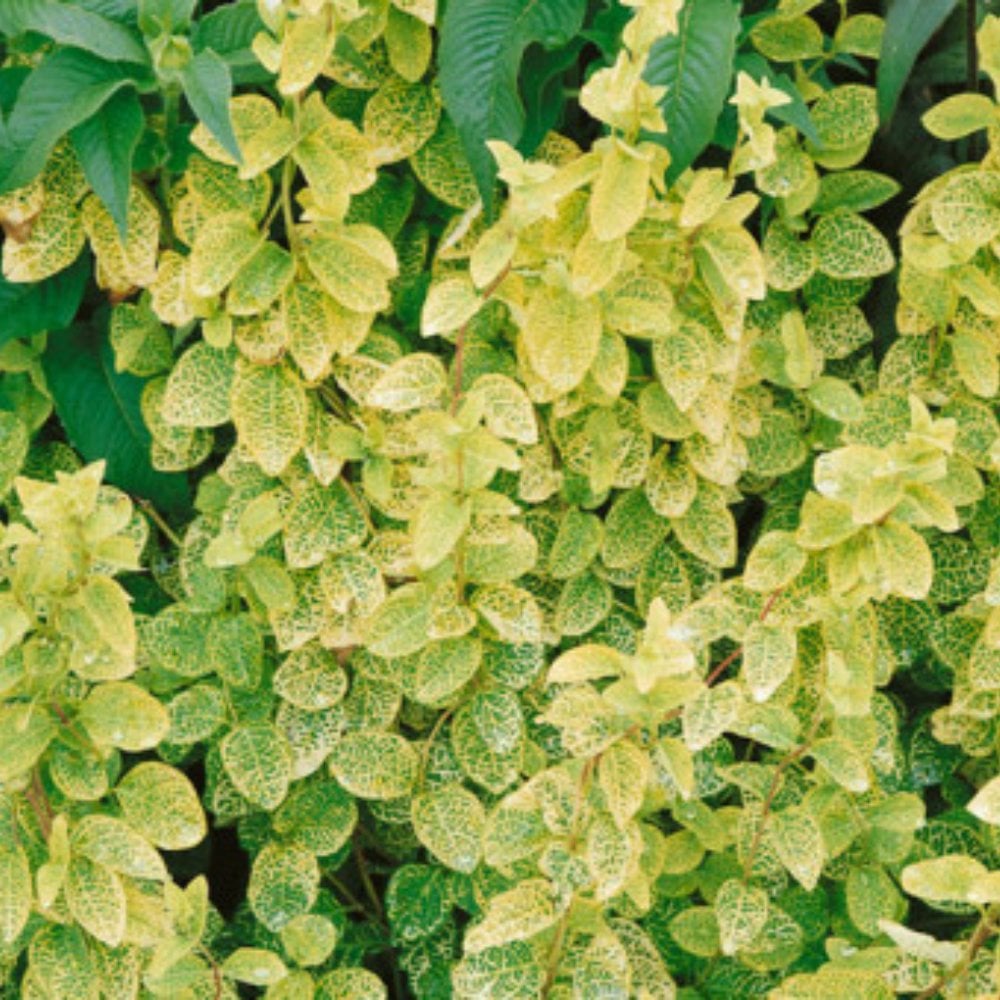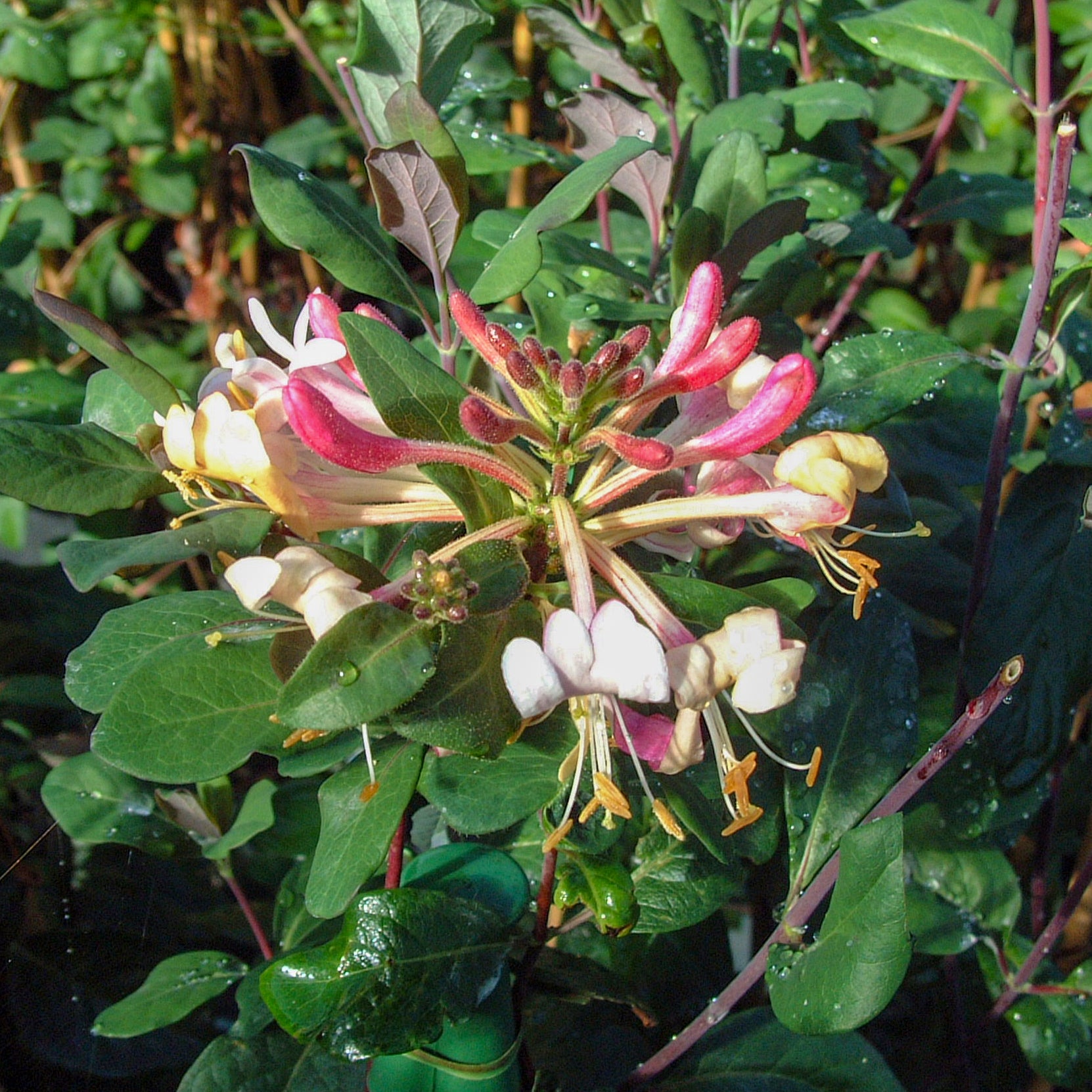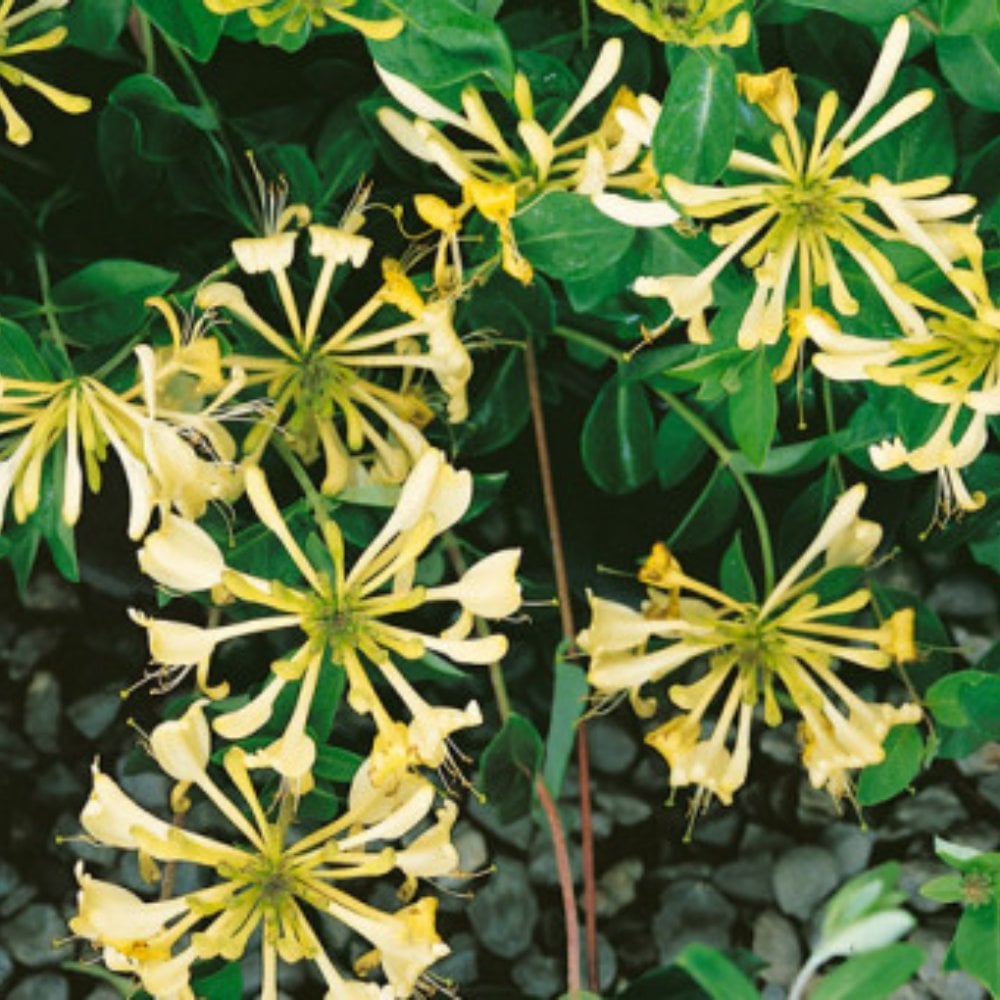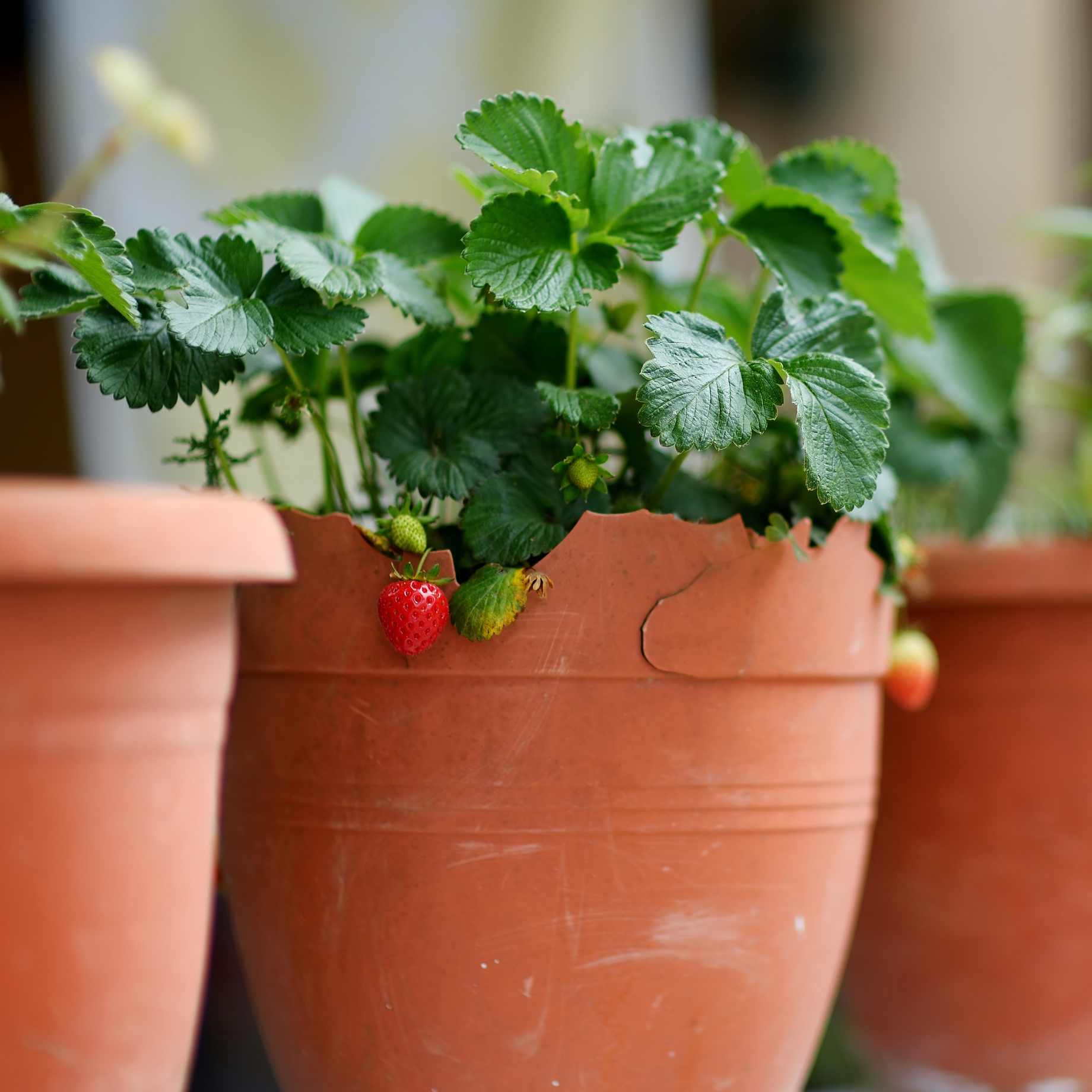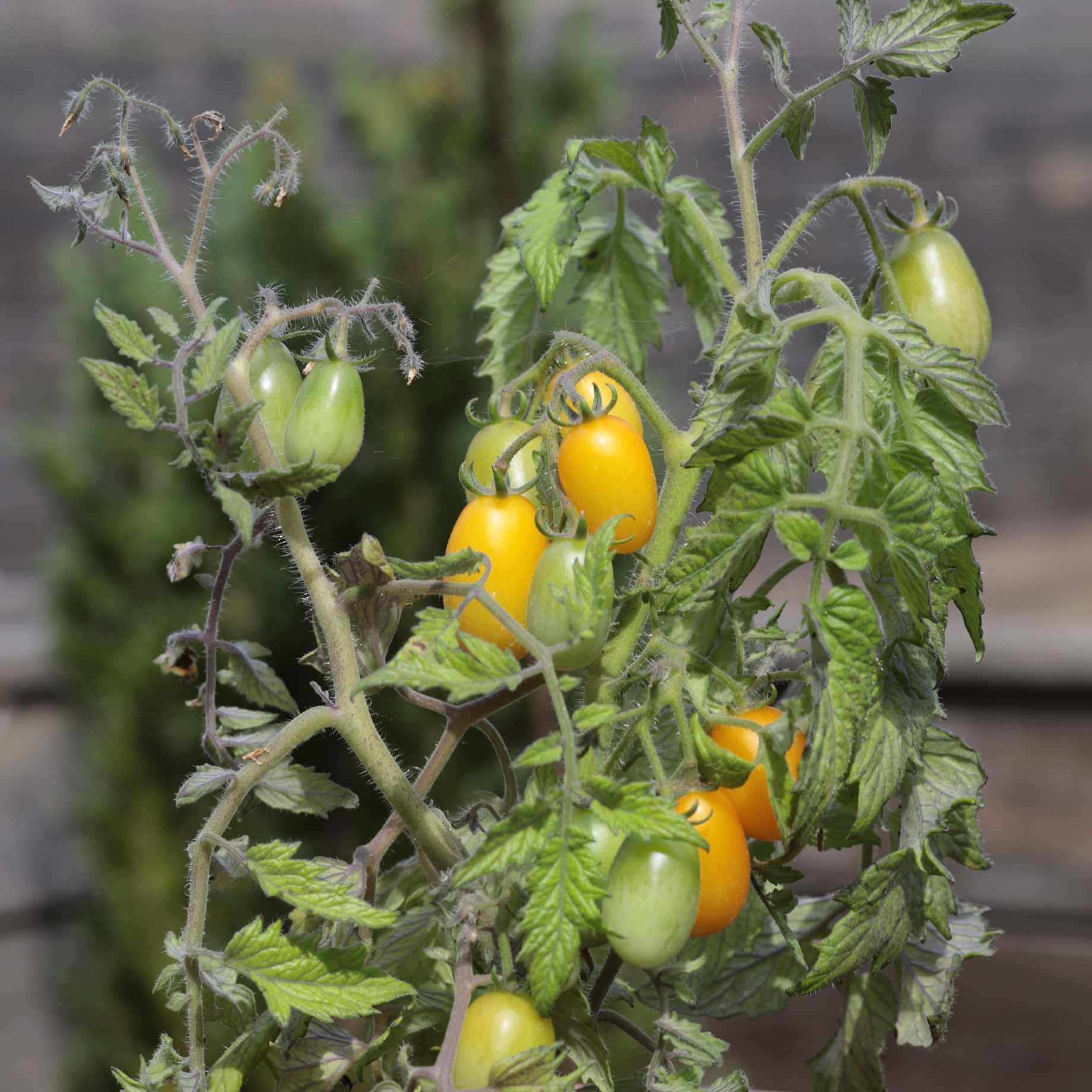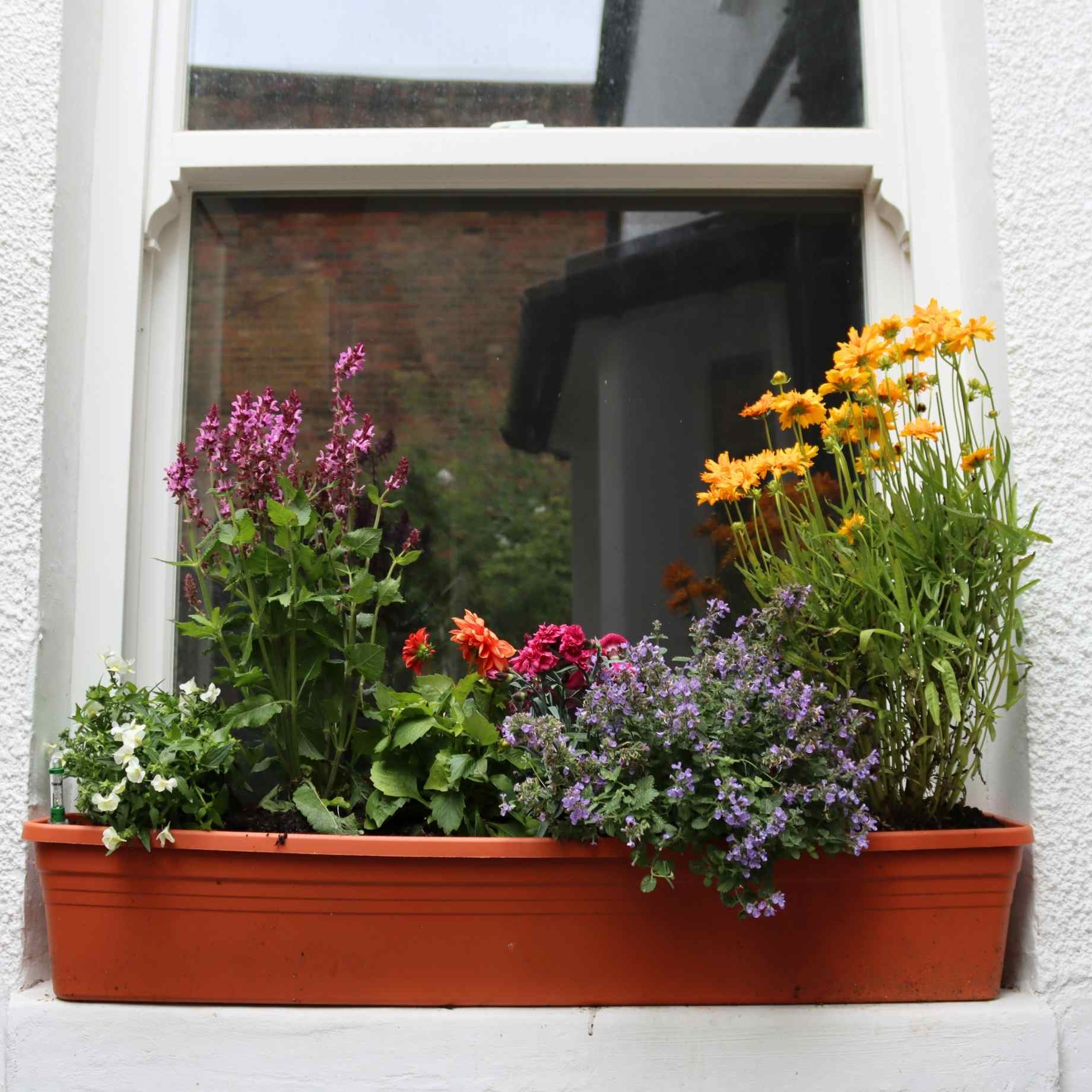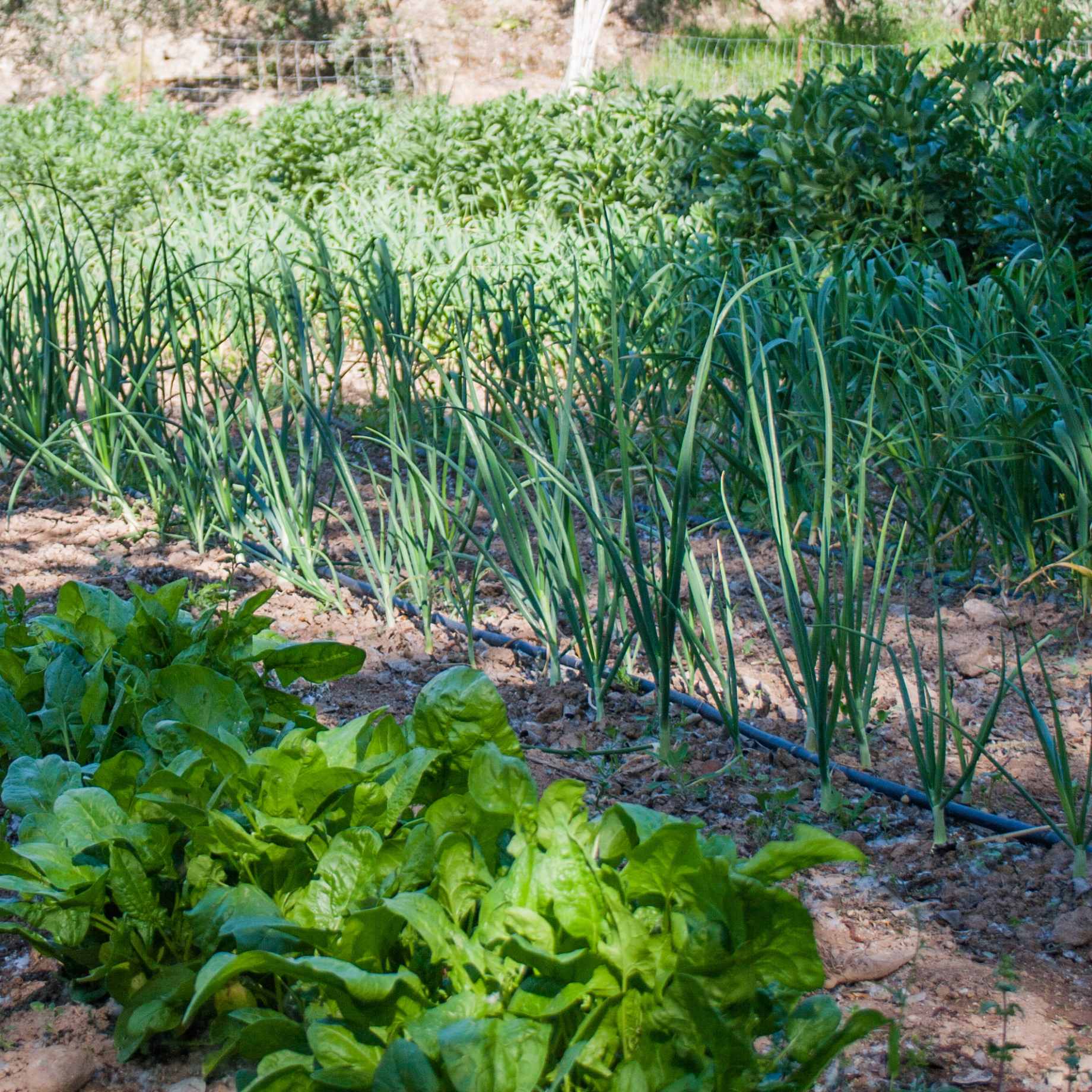Key features
AwardsRHS Award of Garden Merit
Final size6 x 4 metres in 20 years
FoliageGreen and yellow leaves (semi-evergreen)
FlowersLarge, strongly-scented white flowers in summer
PositionFull sun to part shade
SoilPrefers moist yet well-draining soil
Description
Lonicera japonica ‘Aureoreticulata’ is an award-winning, semi-evergreen Honeysuckle climber admired for its striking veined foliage. Pure white, scented flowers emerge in summer against this backdrop of leaves for a very attractive overall display. When mature, the flowers can take on shades of butter yellow.
Plant this variegated Japanese Honeysuckle against a sturdy climbing support, such as a trellis or obelisk, in a location where its sweet fragrance can be best enjoyed. Happily planted in most moist well-draining soils with an approximate height and spread of 6 x 4 metres in 20 years.
AKA Lonicera japonica ‘Variegata’, Variegated Japanese Honeysuckle
Planting Steps
1Preparation
- Pot-grown plants can be planted at any time of year, whereas bare roots need to be planted between November and March.
- Clear weeds and grass within a metre of the planting hole.
- Dig a hole as deep as the root mass and twice as wide.
- To help your plant establish more effectively, sprinkle Rootgrow in the hole.
2Planting
- Gently loosen the roots and place into the planting hole.
- Ensure the top of the plant’s compost is flush with the level of the surrounding soil and the graft union or collar of the tree is above ground level.
- Mix 50% of the original soil with 50% compost.
- Fill in the hole, firming the soil gently.
3Last Steps
- Water generously around the base of the plant.
- If you are planting either a single stem tree or mature standard tree, we recommend adding a staking kit and rabbit guard.
Aftercare Advice
Trees and shrubs require a good watering regime for a couple of years whilst they establish. Water well and regularly through spring and summer, increasing in hot or dry weather. If planting in autumn, you may only need to water a little. It is advisable to keep the area free of competing weeds and grass during this period.
For more detailed advice and video guides, please visit our Help & Advice section.

